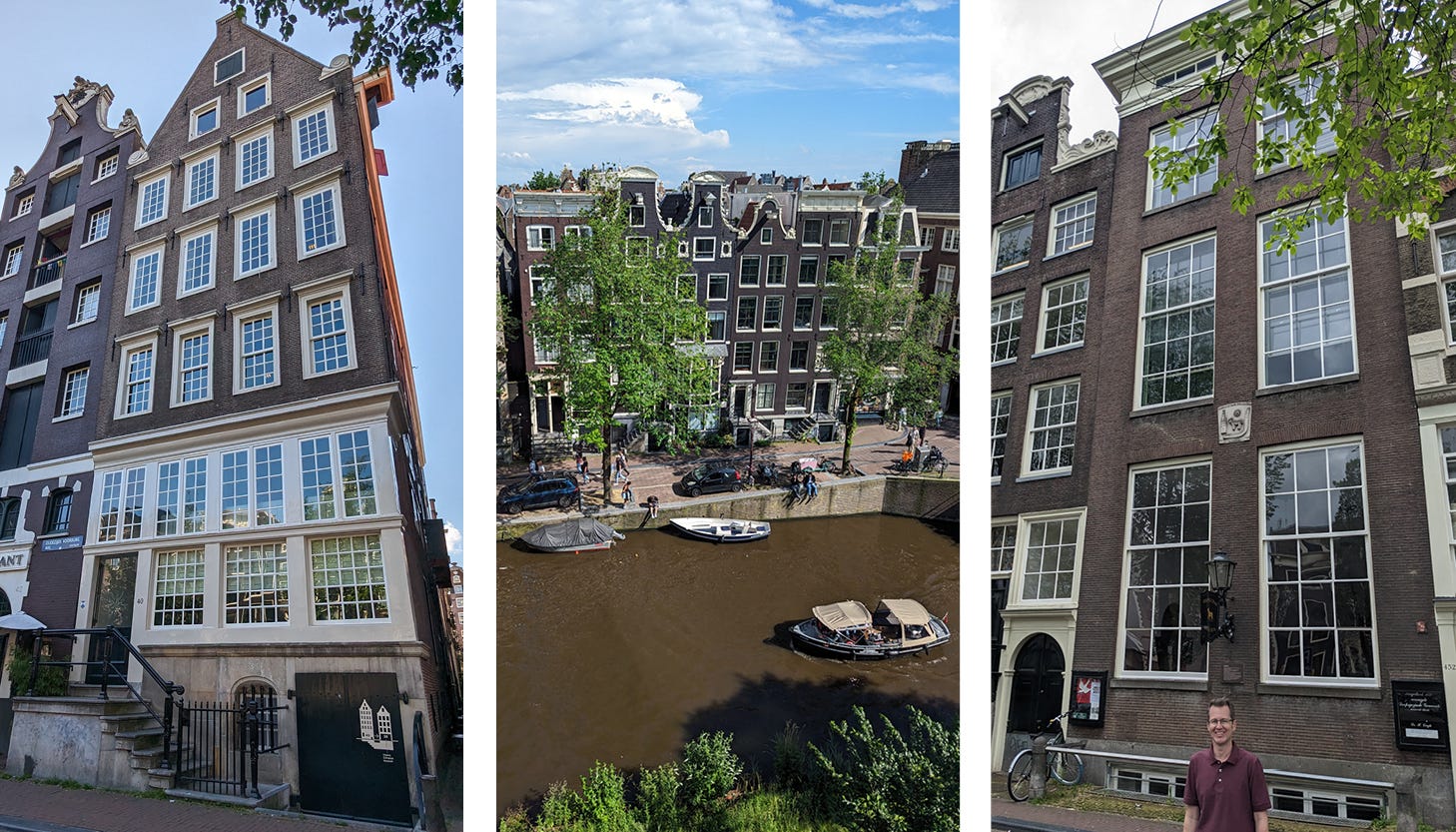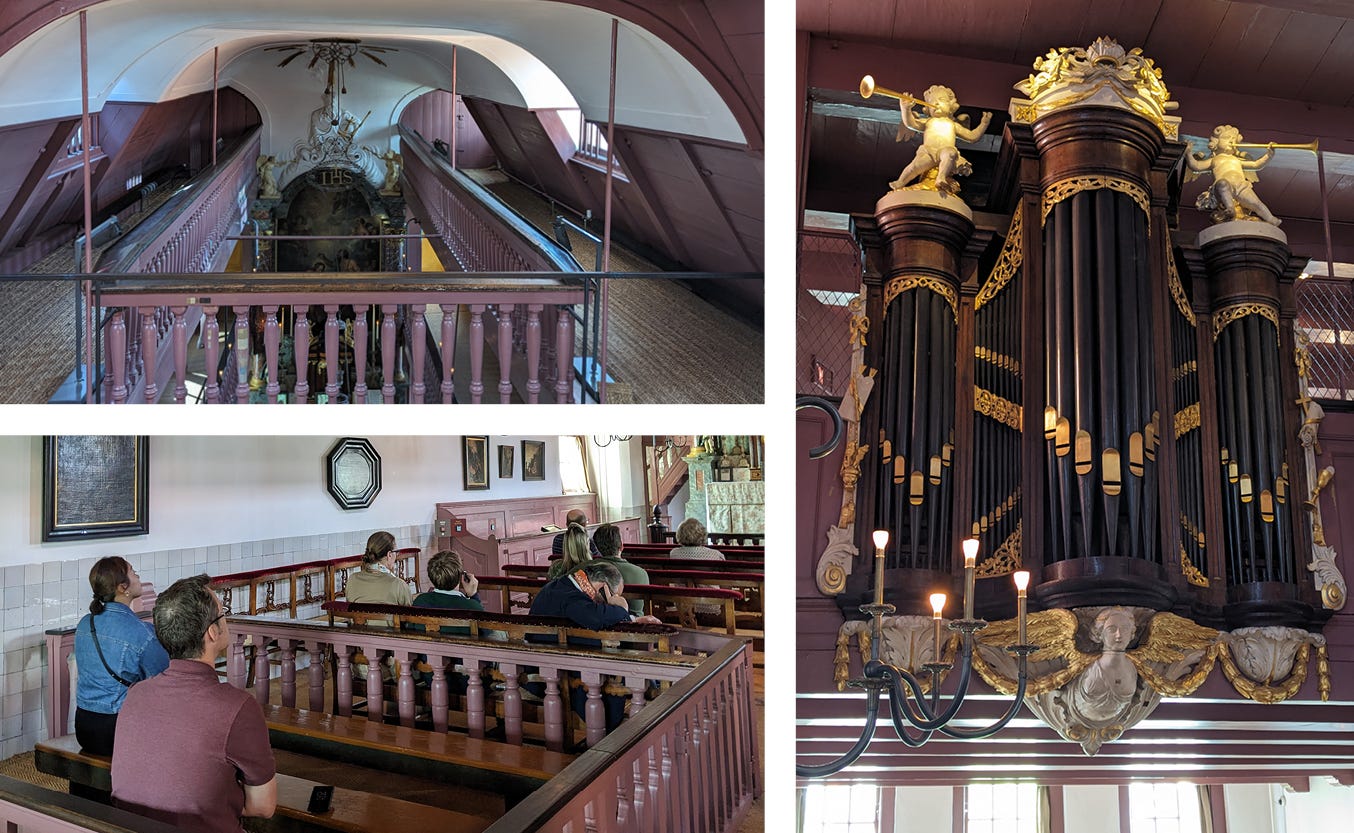Our Lord in the Attic
During a visit to Amsterdam last month, I visited a hidden Catholic church. Well, it used to be a church but still remains hidden from view on the street.
Our Lord in the Attic (or Ons’ Lieve Heer op Solder in Dutch) was built in the early 1660s during a time when the Dutch Reformed Church didn’t allow Catholics and other religious dissenters to worship openly. But unlike most of Europe at the time which completely banned and persecuted those of different religious beliefs other than the official Protestant or Catholic state church, Amsterdam provided a bit of tolerance. People could still worship, just so long as they didn’t do it in public or even in a building that looked like a church. The officials allowed people to do whatever they wanted inside their homes, but didn’t actually provide religious freedom in the public square.
A wealthy Catholic merchant in Amsterdam, Jan Hartman, turned the upper three floors of his canal house into a schuilkerk (or “clandestine church”). Merchants would often store products in the upper levels of their houses, but Hartman bought an adjacent building for his storehouse, allowing him to create this space for his religious community. He had to cut through the floors to create two levels of balconies so more people could attend and so the large, sacred artwork typical in cathedrals could fit. Dozens of such hidden Catholic churches once existed, but this is the best intact example today. The church even had a priest who also lived in the building in which he celebrated Mass and heard confessions.
Other religious communities similarly worshiped away from public view, like Singelkerk — a Mennonite church that started in 1607 and built a house-like building in 1639. The congregants still worship there in what looks like a canal house, other than the fact they now can post signs outside advertising themselves as a Mennonite church. This relative religious freedom compared to the rest of Europe attracted persecuted groups like the Mennonites and some English separatists who interacted with the Mennonite congregation and nearby held the baptism service for what became the first Baptist church (in the world).

When Catholics were finally able to worship openly starting in 1853, they began building actual churches. That led Our Lord in the Attic and other such hidden churches to eventually shut down. Many of them were eventually turned into typical domestic rooms or office spaces. Fortunately, Our Lord in the Attic was preserved and transformed into a museum in 1888, the year Mass stopped there because Saint Nicholas Basilica opened nearby. Before the COVID-19 pandemic, more than 85,000 people visited the museum, church, and living quarters each year.
Entering the Hartman house, worshipers would climb three flights of narrow, spiraling Dutch stairs by going through a fake door in the living room. Before entering the attic church, they could dip their fingers in a basin of holy water. Then they entered the narrow sanctuary that rose up three floors. Supposedly, 150 worshipers could fit in there, but that would be quite a crowd and would surely violate modern fire code standards for a space of this size. It’s so tight that the pulpit actually folds away inside a column painted to look like marble near the altar so the priest could bring it out only when needed.
A couple of small confessional booths sit in the hallway behind the sanctuary. A large oil painting — “The Baptism of Christ” by Jacob de Wit — hangs above the altar. An organ was added in 1794 at the back of the sanctuary.

It’s a remarkable sanctuary, rich in history and beauty. It pales to the scale of the grand cathedrals in Europe from that time, but there’s something remarkable in this space. You see the cathedrals coming for miles. You know what you’re entering, and once you’ve been in one you can kind of imagine the basic scene of another before you step in. But Our Lord in the Attic tricks you. You walk into a house and suddenly find yourself transported not only back in time but also into a holy space. What it lacks in size, it gains with surprise and history.
The church-turned-museum represents such an important part of Amsterdam — and even European — history that locals in 2020 launched a successful campaign to save funding for the museum after the Amsterdam Art Fund initially cut it from the budget. And in April, Our Lord in the Attic was added to the European Union’s cultural heritage list that includes just 68 sites recognized for their “symbolic value, the role they have played in European history, and the activities they offer.”
“Freedom of thought, conscience, and religion are central to the European idea of rule of law,” the commission said. “Europe has a long history of religious strife, to which the many examples of hidden places of worship attest.”

The church does show a version of religious tolerance that was rare in 17th-century Europe. But it also shows how even this place religious dissenters flocked to still fell far short of true religious liberty. As historian Genji Yasuhira, who wrote a book about 17th-century Dutch Catholics, noted, “The deprivation of rights in the public sphere for Catholics and other dissenters in the Dutch Republic, letting us know that the so-called ‘Dutch Golden Age’ entailed discrimination against non-Reformed people.”
Our Lord in the Attic shows the middle space of a society that hovered somewhere between inquisition and religious freedom. A hidden church allowed to exist is better than an underground church persecuted by authorities. But such private tolerance is far from a vibrant, pluralistic public square open for all people regardless of their religiosity.
Mixing church and state, like what those pushing Christian Nationalism desire, pushes religious dissenters into hidden rooms. Sometimes it leads to official persecution, while other times it just creates second-class religious communities barely tolerated. Either way, it harms society and harms Christian faithfulness. And, like in 17th-century Europe, Christian Nationalism inevitably targets Christians of different denominations than those in power. May we learn from history to avoid its echoes.
As a public witness,
Brian Kaylor



